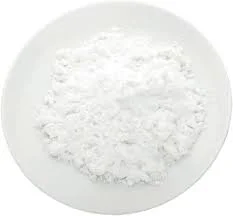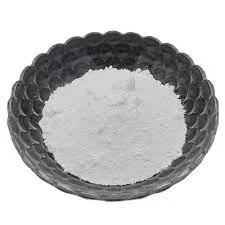In recent years, solar energy has emerged as a leading renewable energy source, with solar panels becoming increasingly popular for generating electricity. Within the solar industry, various materials are used to optimize the efficiency and performance of solar panels. One such material is anatase TiO2 (titanium dioxide), which plays a crucial role in enhancing the functionality of solar cells. In this article, we will explore the uses of anatase TiO2 in the solar industry and its importance in improving solar energy conversion.
I. Understanding Anatase TiO2
Anatase TiO2 is a form of titanium dioxide that exhibits unique properties and characteristics. It is a white, crystalline substance that is widely used in various industries due to its excellent optical and electrical properties. Some key points to understand about anatase TiO2 include:
Structure: Anatase TiO2 has a tetragonal crystal structure, which gives it unique properties compared to other forms of titanium dioxide, such as rutile or brookite. Its crystal structure contributes to its high surface area, making it ideal for applications requiring extensive surface interactions.
Photocatalytic Properties: Anatase TiO2 is known for its excellent photocatalytic properties, meaning it can use light energy to facilitate chemical reactions. This property is crucial in solar applications, as it allows for the efficient conversion of solar energy into electrical energy.
Semiconductor Behavior: Anatase TiO2 exhibits semiconductor behavior, with its unique bandgap allowing for effective absorption of light in the ultraviolet (UV) region of the spectrum. This makes it suitable for harnessing solar energy, as a significant portion of solar radiation falls within the UV range.

II. Uses of Anatase TiO2 in the Solar Industry
Anatase TiO2 finds numerous applications in the solar industry, playing a vital role in enhancing the efficiency and performance of solar cells. Some common uses include:
Photoelectrodes: Anatase TiO2 is widely used as a photoelectrode material in dye-sensitized solar cells (DSSCs) and perovskite solar cells. In DSSCs, anatase TiO2 acts as the electron acceptor, absorbing photons and generating electrons for the electrical current. Its high surface area and excellent charge transport properties make it an ideal material for efficient electron extraction and transport.
Transparent Conductive Oxide: Anatase TiO2 can be used as a transparent conductive oxide (TCO) in solar cells. TCOs are essential for efficient light absorption and charge collection within the solar cell. Anatase TiO2-based TCOs provide a combination of high transparency and conductivity, allowing for effective light penetration and electron transport.
Anti-Reflection Coatings: Anatase TiO2 is used as an anti-reflection coating on the surface of solar cells. By applying a thin layer of anatase TiO2, the reflection of incident light is minimized, maximizing light absorption and energy conversion. This results in increased efficiency and power output of the solar cell.
Electron Transport Layer: In perovskite solar cells, anatase TiO2 is often used as an electron transport layer (ETL). The ETL facilitates the extraction and transport of electrons from the perovskite layer to the electrode, improving the overall efficiency and stability of the solar cell.
Water Splitting: Anatase TiO2 is also utilized in photoelectrochemical cells for water splitting applications. Water splitting is a process that uses solar energy to split water into hydrogen and oxygen, which can then be used as a clean and renewable source of fuel. Anatase TiO2's photocatalytic properties make it an ideal material for driving the water splitting reaction.
III. Benefits of Anatase TiO2 in the Solar Industry
The use of anatase TiO2 in the solar industry offers several benefits, contributing to the advancement and efficiency of solar energy conversion. Some of these benefits include:
High Efficiency: Anatase TiO2's excellent photocatalytic properties and semiconductor behavior contribute to high solar energy conversion efficiency. Its ability to effectively absorb UV light and generate electrons allows for efficient electricity generation in solar cells.
Stability and Durability: Anatase TiO2 is known for its stability and durability, making it ideal for long-term use in solar applications. It can withstand harsh environmental conditions, such as exposure to sunlight and extreme temperatures, without significant degradation in performance.
Cost-Effectiveness: Anatase TiO2 is widely available and relatively low cost compared to other materials used in solar cells. Its affordability makes it an attractive option for large-scale solar energy production, contributing to the overall cost-effectiveness of solar panel installations.
Environmental Friendliness: Anatase TiO2 is environmentally friendly and non-toxic, making it suitable for sustainable energy solutions. Its use in solar panels aligns with the goal of reducing carbonfootprint and promoting clean energy generation.

Conclusion
Anatase TiO2 plays a crucial role in the solar industry, offering various uses and benefits in enhancing the efficiency and performance of solar cells. From acting as a photoelectrode material in DSSCs and perovskite solar cells to serving as a transparent conductive oxide and anti-reflection coating, anatase TiO2 optimizes the absorption of light and facilitates efficient electron transport. Its stability, cost-effectiveness, and environmental friendliness further contribute to the advancement of solar energy conversion. As the demand for renewable energy sources continues to grow, anatase TiO2 will remain an integral component in the development and widespread adoption of solar technology.








